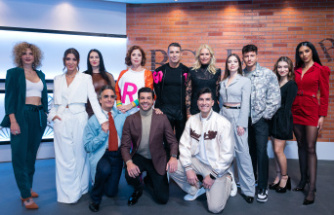Trade in counterfeit branded goods is a billion dollar business. Especially on vacation, tourists like to buy cheap fakes - and quite consciously. The poor quality can also have health consequences.
Ice cream, suntan lotion - and a counterfeit Rolex: During the holiday season, not only ice cream parlors and swimming pools are in high season, but also counterfeiters. Because counterfeit watches or textiles are often bought when traveling abroad, according to a representative survey published by the management consultancy EY.
More than every third consumer in Germany has therefore already bought counterfeit jewellery, clothing or technology - and most of the time, the buyers said they knew or guessed what they were buying. A good two-thirds (68 percent) of purchases were made abroad.
"Above all, products that have a high sex appeal for consumers are copied. It doesn't matter whether it's the new jersey of the national soccer team, a handbag from Louis Vuitton or a Swiss luxury watch," says the marketing expert Martin Fassnacht from the WHU business school in Düsseldorf. Most people who buy a fake Gucci handbag or a fake Rolex are trying to impress other people. "Most people don't recognize a fake." This may also explain why, according to the survey, more than half of the buyers were "very satisfied" (17 percent) or at least "predominantly satisfied" (42 percent) with the counterfeit they had purchased - even if the majority of them were aware that product piracy affected companies will have serious disadvantages.
"The supposedly low price that customers pay for plagiarism is costing others dearly," warned the author of the EY study, Michael Renz. "Billions are lost every year by companies and their employees through counterfeit products." For the luxury brands concerned, possible sales losses due to counterfeits are not necessarily the main problem, emphasizes retail expert Fassnacht. Because the buyers of the plagiarism could usually not afford the original anyway. "But an important hallmark of luxury brands is that they are scarce and rare, and that myth is being shattered by the plagiarism." According to Fassnacht, the fact that luxury brands like to arouse desires with limited special editions still plays into the hands of counterfeiters. "That heats up the market for plagiarism even more."
According to the EY study, the main reason for buying counterfeits is the lower price of the imitations. Almost three quarters of those surveyed cited this as the reason. A good quarter of the counterfeit buyers justified the purchase with the easy access to the counterfeits. According to the survey, counterfeit clothing and accessories, as well as jewelery and watches from well-known brands, are particularly popular with plagiarism shoppers. According to EY, the plagiarisms are bought in almost half of the cases at markets or from hawkers. However, the Internet is also playing a growing role, accounting for 28 percent of purchases recently.
According to a study by the EU Office for Intellectual Property (EUIPO), young people in particular often surf the Internet. In a survey of more than 22,000 young people aged 15 to 24 in the 27 EU member states, more than half of the respondents said they had knowingly or accidentally bought at least one counterfeit product online in the last year. In Germany, according to the information, 39 percent of those surveyed knowingly bought counterfeit goods.
"The counterfeit market has grown steadily over the past few years, especially on the Internet. With just a few clicks, all sorts of fakes can be ordered from anywhere in the world," reported EY expert Alexander Meinrad. And EUIPO Executive Director Christian Archambeau warned: "At a time when e-commerce and digital consumption have increased significantly, the rise in intentional and unintentional purchases of counterfeit goods is a worrying trend."
The Organization for Economic Cooperation and Development (OECD) and the EUIPO estimated the global damage caused by fake products at around 412 billion euros in 2019, which corresponds to around 2.5 percent of world trade. For a long time, counterfeiters have not only devoted themselves to counterfeit Gucci bags or Rolex watches for tourists, medicines, tools and machine parts have also been counterfeited for a long time - with sometimes life-threatening consequences.
Buying counterfeits is not without risk, even with everyday items. Cheap substitute materials in jewelry or harsh chemicals in clothing can make buyers of fakes sick. In fact, four out of five respondents to the EY study named health hazards as the biggest risk when buying generic products. Nevertheless, many would accept the risk, said EY expert Renz. "Of course, this also has to do with the fact that almost all Germans currently have less money in their wallets and inflation is racing from one peak to the next."












